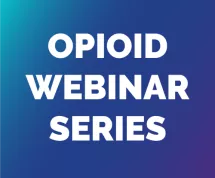Search
Explore content from JFS, ASB, the AAFS Newsfeed, and other content using the search bar or filters.
AAFS 2025 Conference—International Letters of Invitation

Improving flow dynamics and storage longevity of a low‐cost phosphorescent fingerprint...
An inexpensive, commercially available doped strontium aluminate phosphor with long‐lived afterglow was prepared as a luminescent fingerprint dusting powder suited for challenging, highly patterned substrates; however, prolonged exposure to humidity was found to reduce that powde...
A holistic digital forensic analysis of Discord – Storage, memory, and network...
In the last decade, the market share and user base of social media applications have witnessed significant growth. However, this surge in popularity has inadvertently drawn the attention of criminals aiming to exploit these platforms for illicit activities. The forensic examinati...
Cranial trauma in handgun executions: Circumferential delamination defect and its...
Skeletal evidence usually constitutes the only source of information to interpret lesion patterns that help to clarify the circumstances surrounding death. The examination and interpretation of bone trauma are essential to the application and utility of anthropology as a forensic...
Assessment of artificial intelligence to detect gasoline in fire debris using HS‐SPME‐GC...
Due to the complex nature of the chemical compositions of ignitable liquids (IL) and the interferences from fire debris matrices, interpreting chromatographic data poses challenges to analysts. In this work, artificial intelligence (AI) was developed by transfer learning in a con...
Awards, Scholarships, and Grants, Oh My!
Sequence variation of commercially available kratom products at universal DNA barcode...
Mitragyna speciosa, commonly known as kratom, is a narcotic plant that is used for its unique mood‐enhancing and pain‐relieving effects. It is marketed throughout the United States as a 'legal high' and has gained popularity as an alternative to opioids. However, kratom...
Epic Deals for Members—May 14
AAFS 2025: Call for Papers Opens May 28
Remembering Cyril H. Wecht, MD, JD
Analysis of unknown (unlabeled/mislabeled) drug products for active pharmaceutical...
Two chemists employed a three‐device rapid screening "toolkit" consisting of a handheld Raman spectrometer, transportable mass spectrometer, and portable Fourier transform infrared (FT‐IR) spectrometer at an international mail facility (IMF) satellite laboratory to exam...
Analysis of unknown (unlabeled/mislabeled) drug products for active pharmaceutical...
Two chemists employed a three‐device rapid screening "toolkit" consisting of a handheld Raman spectrometer, transportable mass spectrometer, and portable Fourier transform infrared (FT‐IR) spectrometer at an international mail facility (IMF) satellite laboratory to exam...
Death of the suicide law: A changing standard of liability for clinicians
High rates of suicide continue to plague the modern world, with clinicians, researchers, and policymakers working urgently to ameliorate what has been recognized as a worldwide public health crisis. Under American Law, individuals‐ including health care providers, could generally...
The influence of rehydration on decomposition in the Highveld region of South Africa—Using...
Researchers have observed that rainfall may re‐initiate decomposition in desiccated tissue; however, no conclusive research‐based evidence exists on the specific effects of rehydration on decomposition. Therefore, this study aimed to assess the effects of artificial rehydration o...
Board of Directors Meeting Minutes
Warren-Young Scholarship Funds Put to Good Use
Epic Deals for Members—May 10
Advances in Portable Drug Detection
The AAFS ad-hoc Opioid and Emerging Drugs Committee will lead a workshop that will introduce multiple research projects developing or validating portable on-site drug detection methods and equipment. Each method has capabilities over traditional colorimetric testing and may work towards increased on-site sample detection capability and improved detection and discrimination of fentanyl and unknown novel psychoactive substances (NPS) will be discussed.

Emerging Hybrid Separation Detection Techniques for Seized Drugs
This webinar will describe the great utility of emerging hybrid separation detection techniques for the analysis of seized drugs, particularly applicable to emerging drugs, that can overcome the limitations of classical methods such as gas chromatography (GC)- electron ionization mass spectrometry (EI MS) and gas chromatography- flame ionization detection. Included in this webinar are budding separation techniques such as ultra-high performance supercritical fluid chromatography (UHPSFC) and novel separation approaches utilizing ultra-high performance liquid chromatography (UHPLC). Regarding detection techniques low and cold EI MS, and electrospray ionization to produce enhanced molecular ions, and for the differentiation of positional isomers and diastereomers, vacuum ultraviolet, and infrared detection for GC, and ultraviolet detection for UHPSFC and UHPLC will be discussed.
